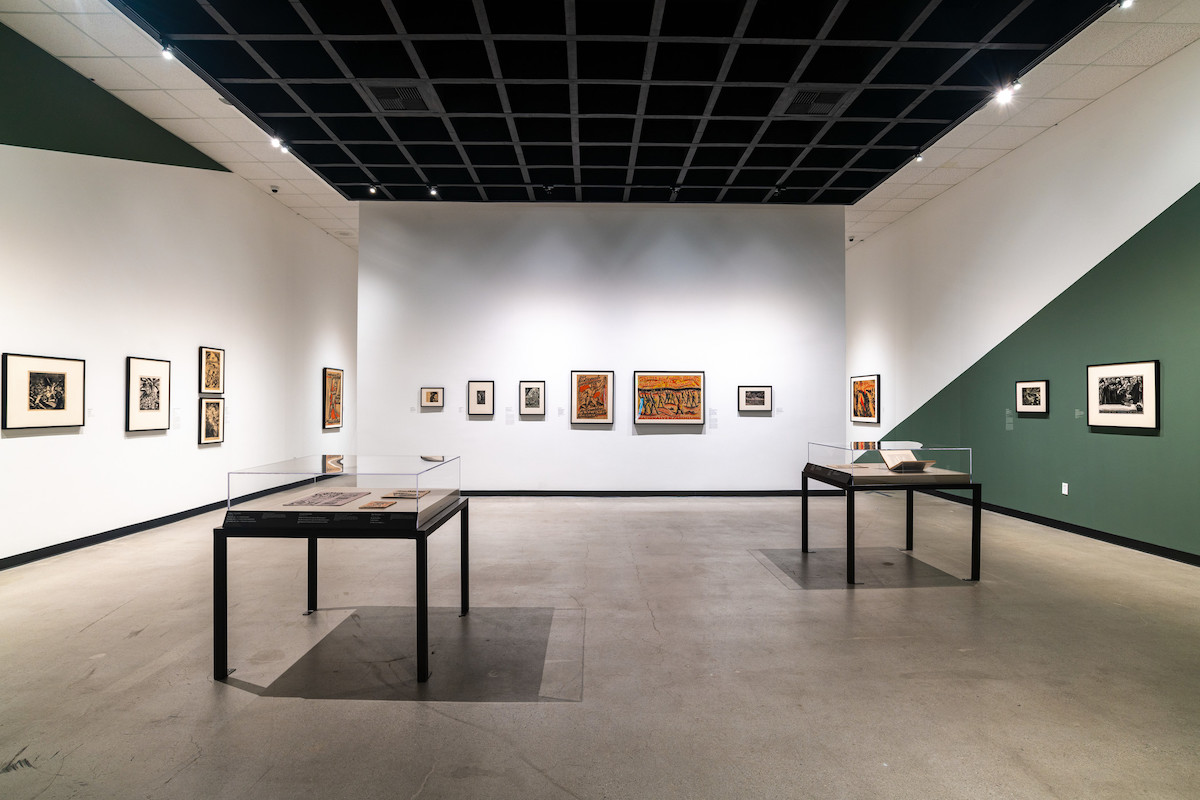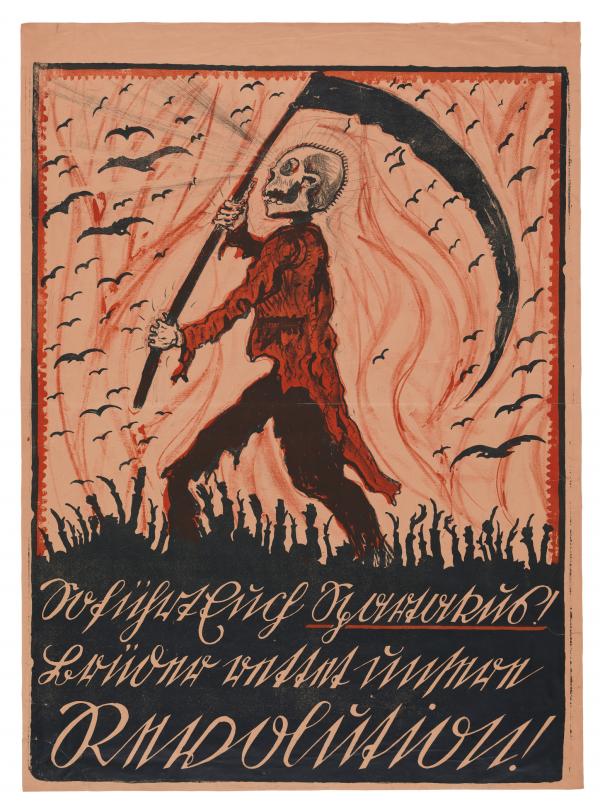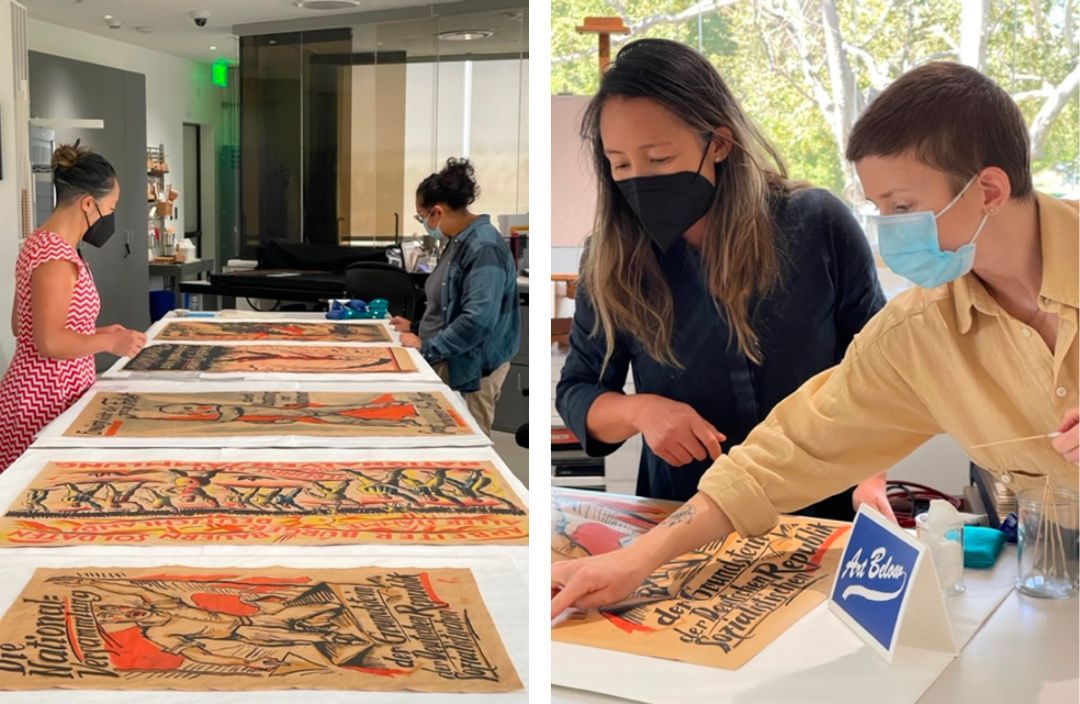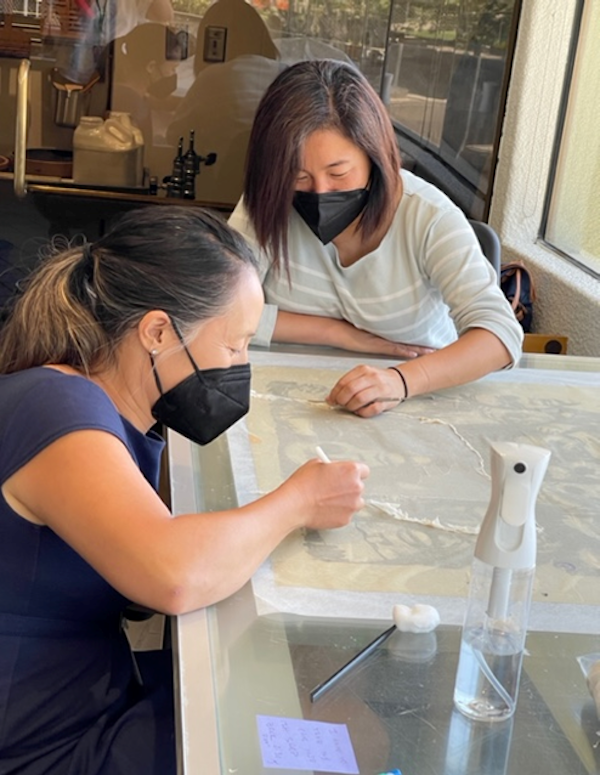The collection of the Robert Gore Rifkind Center for German Expressionist Studies at LACMA includes a large number of political posters produced in the early 20th century. Their subject matter documents events such as World War I and the rise of fascism. Another popular topic is the German Revolution, also called the November Revolution, which started in November 1918, days before the end of World War I. It was precipitated by the mutiny of sailors who refused to continue fighting; their actions ignited a revolution that spread throughout Germany and resulted in the abdication of Kaiser Wilhelm II and the declaration of the democratic Weimar Republic. Revolutionary-era posters encouraged citizens to vote for the National Assembly, discouraged strikes and unrest, and denounced political violence. They promoted political parties, and were produced by groups on the left and right. The posters were plastered on buildings and display columns, called Litfaßsaule, in cities across Germany. One commentator noted that during the revolution Berlin’s streets, “rioted in color orgies, the houses exchanged their gray faces for an agitated mask.”
The Rifkind Center has one of the most comprehensive collections of such posters in the world; a number are currently on display in the exhibition Pressing Politics: Revolutionary Graphics from Mexico and Germany, on view at LACMA’s satellite gallery at Charles White Elementary School. These posters are what is called ephemera: printed items produced for a particular, temporary use and therefore also intended to have a short shelf-life. For this reason, such posters were not made to last—they were printed on inexpensive paper that is easily torn, frayed, and discolored. The Rifkind posters are no exception, and many of them required special treatment before they could go on display in Pressing Politics. With financial assistance from a Getty Paper Project grant, LACMA conservators Janice Schopfer, Soko Furuhata, and Madison Brockman, along with independent conservator Erin Jue, were able to devote the necessary time, energy, and materials to conserving these important posters for display and preservation.
In order to treat the posters the conservators needed to assess their condition. First it was necessary to determine if any wet treatment was possible. To do this, the solubility of the printing inks was tested. A report was written describing the current condition of the posters including: discoloration such as darkening, staining, accretions, and old adhesive residues. The mechanical condition describes planar distortion, tears, losses, abrasion and brittleness as well as any old linings or backings. In keeping with The American Institute of Conservation, both a written report and digital documentation is required when artworks undergo treatment. Digital images were captured by our Conservation Center photographer Yosi Pozeilov both before and after treatment.
In the past posters were lined with a variety of materials to make them more durable or to support posters that were in poor condition. The lining papers and most of the adhesives used in the past are not considered museum quality. Therefore, to stabilize and improve the general appearance of these posters, conservators remove these old linings, reduce the residual adhesive and discoloration, repair and compensate for loss, realign existing tears, and flatten cockling and buckling. Treatment also reduces acidity and bi-products of deterioration slowing down further degradation of the poor quality paper. This poster by Käthe Kollwitz was lined with a Japanese paper and the adhesive proved to be soluble in water. Because of this the poster could be wetted out with a spray application of pH-adjusted water. The poster was then placed on a light table. Light passing through the poster allowed the conservators to monitor the detachment of the lining and prevent any possible skinning of the back of the poster. The poster was re-wetted as needed to prevent uneven drying and facilitate the solubilization of the starch based adhesive. Tweezers were used to carefully detach the paper lining. This process needs to be slow and precise. The backing removal took most of a day to complete.
Heinz Fuchs’s 1919 poster (Workers, Starvation Approaches. Strikes Destroy, Labor Restores. Do your Duty, Work!), however, was lined with a gray architectural linen. The adhesive used to attach this backing was much more difficult to soften and remove. Several treatment approaches were tried before Madison Brockman perfected a treatment protocol that was effective in softening and removing the filler from the architectural linen. Reducing the filler made the impregnated linen cloth more porous. A brush application of water hydrated the lining adhesive just enough to allow the conservator to carefully remove the linen fabric in small patches again with tweezers. Another light brush application of water directly on the residual adhesive softened it enough so that it could be mechanically removed with a teflon spatula. Unlike the previous poster this backing removal took well over two weeks to complete.

All of the posters were discolored. This was due to the normal aging of the poor-quality wood pulp paper, long-term exposure to shifting temperature and relative humidity and light. To reduce this discoloration, the posters were briefly washed in pH-adjusted water. Care was taken not to contact any red ink, which became slightly soluble during bathing. Bathing the posters not only helped remove residual adhesive from the back of the lined posters but also helped to lighten the brown discoloration and reduce acidity, making the paper less brittle.
Once the posters were bathed and the tears repaired with thin, toned Japanese paper attached with wheat starch paste, they could be humidified and flattened in blotter stacks with appropriate weight. The posters remained in the pressing stacks for weeks to ensure that they would retain a planar stability. At this stage in treatment we were ready to begin compensation for loss or inpainting.

Because these posters were produced for temporary public display. They were not treated like fine art and now often show signs of use. This includes tears, abrasion of the ink, small losses in the paper support, previous poor-quality repairs and inpainting. To improve the general appearance of these posters we inpainted these abrasions and losses and toned the papers used to fill holes in the sheet. In preparation for inpainting the poster was secured to a board on an easel. In this upright orientation, it is easier to make a good color match. The inpainting is done with watercolor, Carb-othello pencils, and dry pigment. This allows the conservator to match the color density and sheen of the printing inks. It is important not to overpaint any of the surrounding original paper and/or printing ink.

When a piece of paper is folded the stress on the paper fibers often results in breaks, tears or abrasion to the surface of the paper as well as the printing ink. Posters or ephemera were often folded to make them easier to store. Of course, posters are now considered valuable not only for their unique aesthetic and design but also because of their link to historical events.

In order to improve the poster’s visual integrity, cosmetic repair is often recommended. This repair may consist of filling a loss in the paper support with a piece of similar paper, cut to fit the area of loss and then toned to match the surround. Visual distractions seen as abrasion of the printing inks or paper may be improved by what is called color compensation.

The above photo of a poster by Käthe Kollwitz before treatment details its the overall discoloration, extensive overpainting used to disguise printing irregularities, areas of loss, and localized staining. Treatment included backing removal, bathing to reduce discoloration, tear and loss repair, humification and flattening, and color compensation to reduce the visual distraction of the old poor-quality overpainting. This is a good example of the reduction of discoloration and staining.
Now, the posters were ready to be matted and framed. Options for framing are discussed with the curators. These decisions are critical to the overall design and presentation in the gallery.

You can see these posters and more up now in Pressing Politics: Pressing Politics: Revolutionary Graphics from Mexico and Germany through July 22, 2023, at Charles White Elementary School Gallery, open Saturdays from 1–4 pm.
For more information on another LACMA conservation project undertaken with the help of Getty Paper Project funds, please see Madison Brockman’s essay in the Pressing Politics exhibition catalogue, “Pressing Questions: A Technical Study.”







